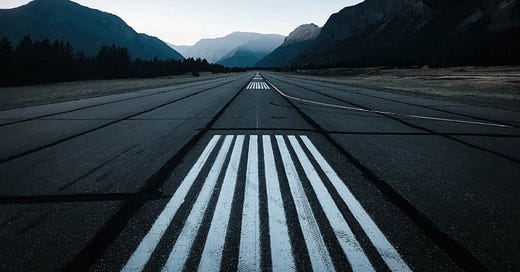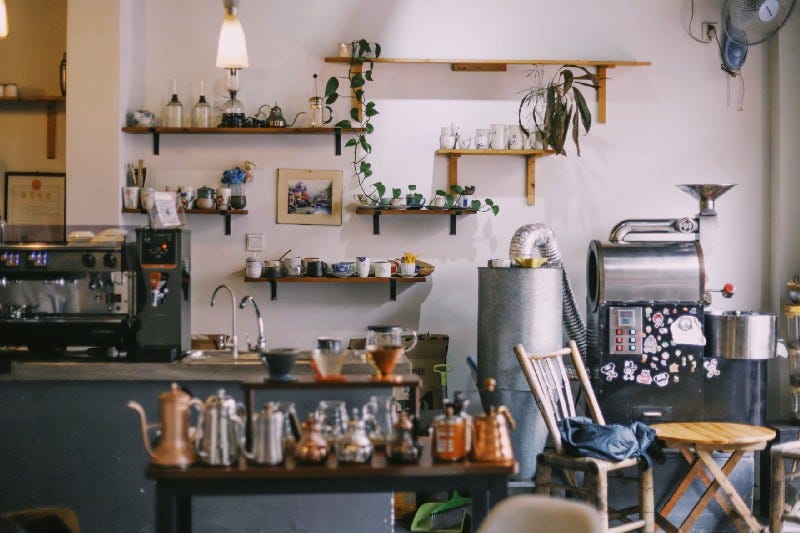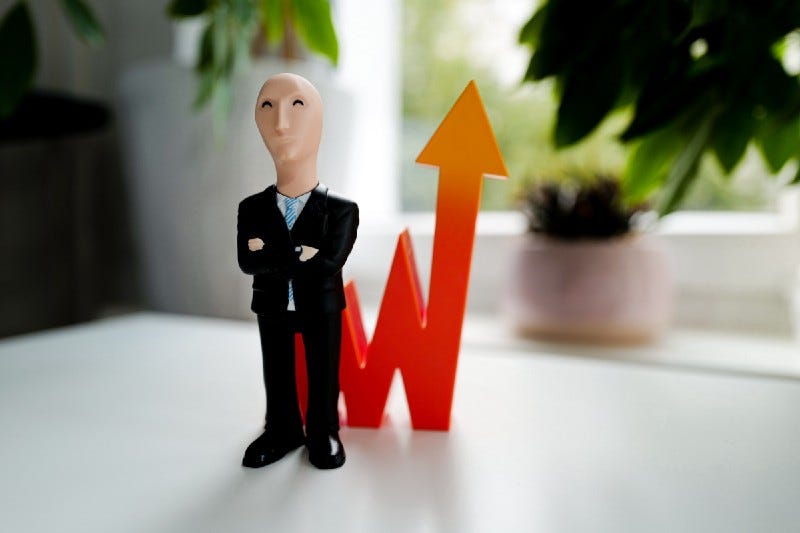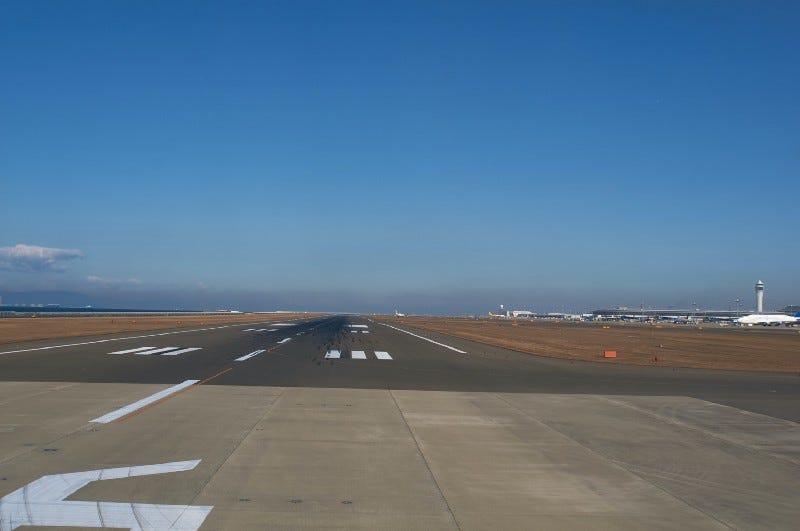The 8th Wonder of The World - A Little Known Trait of a Wonderful Business
Forget The 7 Wonders Of The World- Here's The Real Thing
We’ve all heard about the 7 wonders of the world. It’s been widely known that the 8th wonder of the world is compounding our investments.
But in order for our investments to compound, we need to know what to look out for in a business.
One of the greatest qualities a business can have: a LONG RE-INVESTMENT RUNWAY.
If a business can plow its profits back into itself, to grow at a good clip for a long time, it can make its owners extremely wealthy.
We’ll start by using an example, from starting a business, to running the business and finally selling the business.
Starting A Business
Suppose that Sam wants to start a chain of coffeeshops. He does some research, sourcing for some good locations for these coffeeshops.
Say a coffee machine costs $2K and Sam buys 100 of these, putting in $2K * 100 = $200k of his own money. Right from the outset, Sam has a cash outflow of $200k. That’s his “upfront capital”.
Having invested $200k in upfront capital, Sam hopes to receive more than $200k from his coffeeshop business over time. Every time a customer comes through the doors of the coffeeshop, Sam generates revenue. That’s cash into the pocket for Sam.
At the same time, cash also goes out of his pocket, via operating and capital expenses. Operating expenses include things like rent, electricity, water, staff salaries, and taxes. Capital expenses include repairing and replacing coffee machines from time to time.
After covering both operating and capital expenses, let’s say Sam is able to take out $20k per year from his coffeeshops. In other words, Sam’s business pays him a $20k dividend at the end of each year.
Business Cash Flows
Sam has a $200k cash outflow at the start, and then a $20K cash inflow every year after that. That’s a 10% per year return (IRR, or Internal Rate of Return) for Sam on his $200k investment.
Sam’s coffeeshops are still paying out $20K in dividends every year to him. And there’s still $200k worth of capital in the business. But Sam is now getting on a little, and wants to retire. He is looking to sell his coffeeshops to fund his retirement.
Business Acquisition
Along comes Barry, who buys Sam’s coffeeshops for $1M. As we said, the business has $200k of assets. It earns 10% ($20K) per year on these assets. Barry figures he’s paying about 5x book value (P/B), or 50x earnings (P/E) for the business. Seems expensive for a 10% compounder.
The thing is, Barry won’t make anywhere near a 10% return on his investment that Sam makes. Why? Because Barry paid 5 times book value, which means he only gets to earn one-fifth of 10%, or 2% per year.
This is the same business that Sam used to own. With the same assets, cash flows, earnings, and dividends. Where the business earned 10% for Sam, it earns only 2% for Barry. The difference is that Sam only invested $200k to build the business, but Barry invested $1M to acquire it.
How Much You Pay Affects Your Returns
Purchase price makes a huge difference. The business doesn’t earn more just because Barry paid a high price for it. It pays out the same $20K dividend every year, which is just 2% of Barry’s $1M purchase price. So, Barry only gets a 2% IRR.
Viewing stocks as businesses
The same theory holds true whether we buy entire businesses or small pieces of them (i.e. stocks).
If a business doesn’t grow, and it gives dividends out of its profits every year, the IRR is equal to its dividend yield.
A business may earn 10% on its capital, but the owner of the business may only earn 2% on their purchase price. This is what Barry is faced with, and there is only one way he can overcome this: Don’t pay dividends for a while, and re-invest that “dividend” money back into the business instead.
Re-Investing > Paying Dividends
Suppose Barry doesn’t need his $20K dividend each year. Instead of taking out this $20k every year, Barry leaves this money in the business. He uses this money to expand the business, by buying more coffee machines, coffee beans, and opening more locations.
Assuming these additional investments by Barry have the same economics as Sam’s original $200k investment. That is, the business earns 10% per year on its capital, Sam’s original $200k as well as Barry’s subsequent “contributions” (via dividends not paid out).
We know that when Barry first takes over from Sam, he pays Sam $1M for the business. That’s a $1M cash outflow for Barry at the start.
Then, in Year 1, the business earns $20K. But Barry doesn’t take any of this $20K out. Instead, Barry re-invests this $20K back into the business. This adds $20K to the $200k of capital already in the business, leaving it with $200k + $20K = $220k of capital.
In Year 2, the business can then earn 10% on this $220k = $22k. This is a 10% increase from the $20k earned in Year 1. This is where the magic of re-investment compounding kicks in.
Is Re-Investment Sustainable?
This 10% growth in earnings can continue for as long as Barry is:
a) Willing to sacrifice dividends, and
b) Smartly re-invest this “dividend” money to grow the business, to earn the same 10% on all new capital he’s pouring into the business.
Of course, Barry won’t be able to continue making these high return investments indefinitely. At some point in time, there will be a limit to how many coffee machines Barry can buy, and coffeeshops he can open. Eventually, Barry won’t be able to re-invest his profits to grow at 10% per year. When that happens, Barry will be forced to take a dividend, whether he needs it or not.
Re-Investment Runway
Let’s say Barry has a 5-year “Re-investment Runway”. That is, Barry sacrifices dividends for 5 years. In each of these 5 years, Barry grows profits 10%, by re-investing his dividend money back into his coffeeshops.
After 5 years of 10% growth, the business will be earning $20K*(1.10⁵) =$32.2K per year. From Year 6 onwards, Barry will be forced to take out this $32.2K per year as a dividend — because his “re-investment runway” has ended.
What can we learn from this?
Companies with a long re-investment runway make the best investments.
Buying a high quality business with a long runway that can re-invest the profits at attractive rates of return is a shortcut to achieving supernormal investment returns.
Even if it means paying a high price to acquire the business, we are likely to do well in the long run.
If you enjoyed this, the highest form of compliment that you can give me is to share it with one other person who you think would benefit from it.











